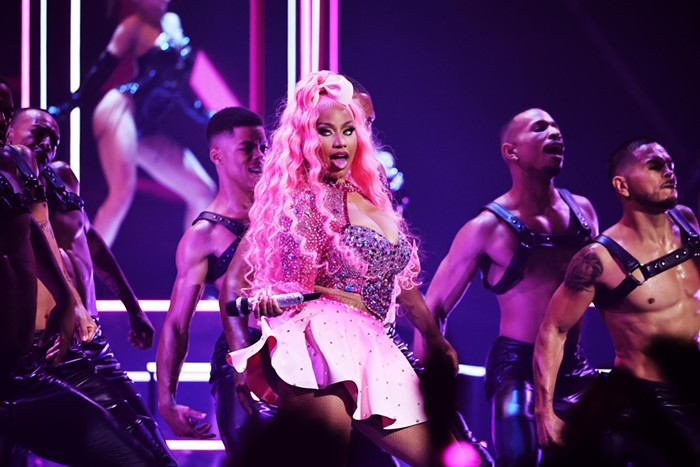The fantastic, prolific rapper MF Doom was born in London, raised in Long Island, and officially began his career on 3rd Bass's hit (and MC Hammer dis) "The Gas Face" (1989). Then named Zev Love X, he made the guest appearance in much the same manner that Q-Tip made his on the Jungle Brothers' "In Time" (1988). Both rappers offered a glimpse, a sample of what had the potential to become the next big thing in hiphop: with Q Tip, it was the group A Tribe Called Quest; with Zev Love X, it was the duo KMD. A Tribe Called Quest met its potential, retiring after a 10-year run that produced three hiphop classics. KMD vanished after releasing only one record, Mr. Hood, which made little or no impression on the history of hiphop. Zev Love X's KMD collaborator and brother, DJ Subroc, was suddenly killed in a car accident in 1993. And there was the controversy surrounding the cover art for KMD's second album Bl_ck B_st_rds—it had a cartoon drawing of a sambo figure being hanged—causing the album to be shelved by Elektra Records in 1994, after which Zev Love X went into exile.
Six years later, the villain MF Doom appeared on the CD Operation: Doomsday. Few knew who the man behind the metal mask was, and his raps—which lacked the clarity of a specific theme, motive, or direction—only confused matters. MF Doom spewed bizarre line after bizarre line. (From "I Sell Rhymes Like Dimes": "Yo, yo, yo, y'all can't stand right here/In his right hand was your man's worst nightmare/Loud enough to burst his right eardrum close-range/The game is not only dangerous, but it's most strange/I sell rhymes like dimes.") Very little sense could be gathered from the raps or the rapper's persona, save that he was based on the Fantastic Four's main villain, Dr. Doom.
Eventually MF Doom's identity was revealed (it was Daniel Dumile, AKA Zev Love X of KMD). And in 2001, the now-defunct label Sub Verse released Bl_ck B_st_rds with the original, controversial cover. Between 2000 and 2002, MF Doom worked on a variety of projects with rappers and producers like MF Grimm, Prefuse 73, Scienz of Life, and MC Paul Barman. Two years ago, under various aliases, he dropped no less than four CDs: Special Herbs 3 & 4, Vaudeville Villain, Take Me to Your Leader, and Escape From Monster Island. And in 2004, he joined forces with Madlib to produce the exceptional CD Madvillain.
Despite the heavy output, none of MF Doom's work has suffered in quality—which has not been the case for, say, Kool Keith, another busy rapper who connects the spirit of the old school with the current spirit of the underground. Late this year, MF Doom and the producer of the hour, DJ Danger Mouse (the man behind The Grey Album—a clever and convincing combination of Jay-Z's Black Album and the Beatles' White Album), released The Mouse and the Mask on the punk label Epitaph. It rapidly sent MF Doom to a place he had never been before: Billboard's Top 50. Stranger yet, the CD's commercial success had nothing to do with him selling out; The Mouse and the Mask is as experimental, strange, and twisted as his previous work. Granted, the CD is pretty much a promotion vehicle for Cartoon Network's late-night animation programming, Adult Swim, but the combined genius of the rapper and the producer managed to advertise the programs' characters (particularly Shake) without impairing the substance of the music and the raps.
The Mouse and the Mask is not only about Adult Swim, but cartoons in general; even the ponderous, pro-black rapper Talib Kweli, who makes a guest appearance on the nostalgic track "Old School," lightens up for once and offers a few positive words about Saturday morning cartoons. If The Mouse and the Mask is the record that introduces MF Doom to mainstream fame, then it won't be hard for his new fans to enjoy his earlier work. Madvillain, Take Me to Your Leader, Operation: Doomsday, The Mouse and the Mask may have different producers, but in all of these records MF Doom never changes, never dilutes the intoxicating surrealism of his raps.
charles@thestranger.com


















